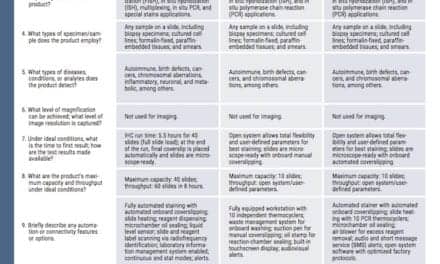A team of scientists have developed a high-power hybrid laser emitter with a fast pulse repetition rate, designed to penetrate deep into the skin to help analyze the biological properties of cells, tissues, and organs.
Photoacoustic imaging (PAI) is an advanced use of ultrasound images as a biological and biomedical sciences tool, which is where the skin or tissue absorbs pulses of laser light. The thermoelastic expansion of the skin or tissue emits sound, which is processed by the machinery to develop high-resolution images. New advancements have theorized the existence of vibrational PAI, which could penetrate further into the skin.
In a new paper published in eLight, the team of scientists, led by Professor Kenneth K. Y. Wong of the University of Hong Kong, detailed the new high-power hybrid laser emitter. The paper, titled “Hybrid optical parametrically-oscillating emitter at 1930 nm for volumetric photoacoustic imaging of water content,” sought to map out the water content in the body to analyze the biological properties of cells, tissues, and organs.
The PAI technique needs to generate high-resolution images with a low signal-to-noise ratio (SNR). The laser needs to have a high laser pulse energy, fast pulse repetition rate, and accurate wavelength tunability to achieve this goal. Water absorbs energy at a relatively low wavelength of about 1000 nanometers (nm), which usually requires milli-joule level pulse energy. That sort of energy can burn the skin, while the lasers that operate at that level are expensive.
The research team developed a high-power all-fiber hybrid optical parametrically-oscillating emitter (HOPE) at 1930 nm. It is the best wavelength for determining the water content of tissue and fats. The HOPE emits laser pulses every 15 nanoseconds (ns), with a 1 nm bandwidth. The research team verified the performance of their system through a proof-of-concept optical-resolution PA microscope system.
The team found that the 1930 nm system improved penetration depth by 2.4 mm. The research team owed it to reducing photon scattering in the tissue within the shorter wavelength near-infrared lasers. The improved penetration ability could facilitate measurable imaging of water content in the deep tissue.
Better measuring of water content could improve the quality of medical diagnosis going forward. These advantages could help open broad biological research and disease diagnosis avenues.
Featured image: The energy of pump signal at 1.55m band was converted to the idler signal at 1.9m via four-wave mixing (FWM) and then it was amplified by a thulium-doped fiber (TDF) to output. Photo: Jiawei Shi, Mingsheng Li, Huajun Tang, Jiqiang Kang, Najia Sharmin, Amir Rosenthal, Kenneth K. Y. Wong




